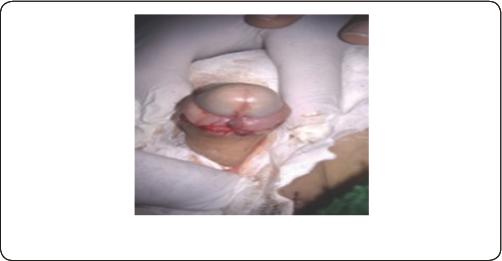Propofol Induced Priapism: Case Report-Juniper Publishers
Juniper Publishers-Journal of Anesthesia
Introduction
Propofol is commonly used as an intravenous
anesthetic drug because of its favorable properties like quick action’s
onset, early recovery and absence of significant nausea. The most
commonly reported adverse events with this drug are the development of
respiratory failure, hypotension and pain during infusion [1].
Propofol has been reported to cause sexual hallucinations during and
after sedation, but priapism was rarely documented in some individuals
previously [2]. Propofol-induced priapism in a healthy male is reported herein, the first case in Tunisia.
Case Report

Patient MF 9 years old without previous history was
admitted for urological surgery cure of bilateral testicular ectopia.
Examination revealed no history of priapism, hematological or genito
urinary disease and genital trauma. Patient didn’t take any medication.
Systemic examination was without any particularity. Complete blood
count, coagulation parameters and blood chemistry were within normal
limits. In the operating hall after conditioning, monitoring and
oxygenation he received propofol (4mg/kg), sufentanyl, (0.3μg/kg) and a
laryngeal mask was introduced. Five minutes after anesthesia’s induction
the patient developed rapid penile tumescence and we thought that this
incident was related to the lack of complete anesthesia. The reinjection
of 50mg of propofol enhanced priapism (Figure 1)
while hemodynamic parameters were and remained correct. Propofol was
stopped and sevoflurane was introduced (1 MAC) but there is no change
and there is a persistence of priapism for a period of 15min. Therefore a
first 3mg injection of epinephrine intra cavernous without results, a
second injection given 10 minutes after allowing immediate detumescence
and no complications were noted after. Anesthesia was continued with
sevoflurane, and the surgery is successfully completed, the patient is
kept under surveillance 24 hours post procedure we did not noticed a
local or general complications.
Conclusion
Priapism experienced by this patient is considered to
be drug-induced because of the temporal relationship. Our patient
experienced a permanent erection after five min of propofol. The induced
priapism may have a causal link very strong with a score of 6 in the
scale of Naranjo [3].
Cumulative dose in our patient was 150 mg and the adverse reaction does
not seem to be dose dependent since the amount remains variable in the
other three cases described [4].
Predisposing factors could probably afford a certain explanation in
addition to those known like sickle cell disease, leukemia, genital
trauma [5].
The mechanism does not seem to go in the sense of low
flow since in time of the incident the hemodynamic state were in normal
limits, but we believe that contributing factors such as the imbalance
between both sympathic and parasympathic system [6], a central action on the GABA system [1] and finally the lipid component appears to play a role in patient already fitted [7].
Further resarch is still necessary to determine the exact mechanism,
and particular care must be given to patients predisposed to priapism or
to those who have had an episode. This world forth case reinforces
other observation to reflect this undesirable effect of propofol in our
practice. This case highlights the report of a possible association
between propofol and the development of priapism as a side effect of
propofol, an anesthetic commonly used in Tunisia, which requires
immediate attention for anesthetists doctors avoid complications.
For more articles in Journal of Anesthesia
& Intensive Care Medicine please click on:
https://juniperpublishers.com/jaicm/index.php
https://juniperpublishers.com/jaicm/index.php
Comments
Post a Comment